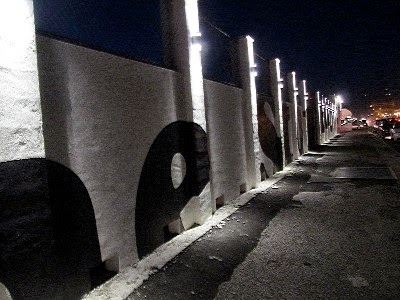Tuesday, September 30, 2014
The stunning part about listening to earlier Springsteen
bands is learning how much he struggled to find his own voice, and how much a
part of his time period he actually was before he broke free.
I discount his one night stand with The Rogues, and look a
bit at his first real gig with the Castiles (a slot he got because of his chameleon-like
ability to learn other bands’ songs quickly.) From what I can gather, this was
primarily a cover band – meaning they primarily performed songs by other bands,
as opposed to Steel Mill, Dr. Zoom and the Sonic Boom, and The Bruce
Springsteen Band which supposedly did mostly originals.
When I first listened to Steel Mill, I thought the band
suffered from what most original material bands do – its material even when not
a cover – sounded like bands from the radio and record.
As good as Still Mill was, it was all over the place,
sounding like every other band of the era from Vanilla Fudge to Cream, which
some Santana, Doors, and some psychedelic lesser known bands thrown in – band that
came to fame and faded away as quickly as they came.
But after listening to the follow up bands to Steel Mill, I
came to realize just how unoriginal early Springsteen bands were – even when
they professed to be original, they were not.
What is most noticeable about the three pre-E Street Bands –
were their ability to radically change with the rapidly changing musical scene.
Springsteen was clearly searching for a sound that was
uniquely his own, and yet, everything he did with those bands sounded like some
other band. While this made them extremely popular with local audiences since
the bands he imitated were extremely popular. At first, I thought this was accidental,
but the more I listened the more I realized that Springsteen’s bands were
deliberately duplicating what they heard, perhaps seeking a road to finding
their own voice eventually.
I originally marveled at Springsteen’s remarkable song writing
ability to adapt so quickly to the changes by writing songs of his own.
Springsteen apparently understood the need to develop
original material. Cover bands make a lot of money because people want to hear
live versions of popular songs, but they often do not advance out of the clubs
and into a recording studio. Even the most popular cover bands of that era such
as Smile, faded away for lack of original songs.
Springsteen needed to provide new songs to feed the
perception of original material. While I am less familiar with the bands Steel
Mill imitated such as Vanilla Fudge, I recognized how close their sound was to
the original, and caught a lot of clichés from bands like the Doors, Cream and
other bands. From the recordings it is difficult to tell whether these songs
were imitations or covers. But with Dr. Zoom and the Bruce Street Band there is
no doubt. Many of the songs that appear on the surface to be original are actually
nearly note for note duplicate songs of what would later become classic songs
by bands like the Rolling Stones or Alman Brothers, even Bob Dylan, with lyrics
changed.
Like any good cover band, Dr. Zoom and the other bands were
able to adjust so quickly to the new reality by learning the new songs, not
creating them, and so Springsteen came off as a much more prolific song writer
than he actually was.
All these changes in so short a time, it is impossible to
just where Springsteen’s E-Street Band material came out of.
Most likely, Springsteen did a mash up of other people’s
songs.
From all of his experimenting, it seems clear that
Springsteen struggled to find a voice that was authentically his own, and
played with other styles in the earlier versions of the band. At times, in the
recordings I’ve heard, we get some hint of the later Springsteen. Indeed, his
first two albums with the E-Street Band were rightfully described at
Dylanesque, clearly because he was hugely influenced by Dylan, and in both Dr.
Zoom and the Bruce Springsteen Band, did songs that were largely Dylan with new
lyrics.
The other most dramatic change between the earlier bands and
what finally emerged was the political tinge. In all the previous bands,
Springsteen reflected the radical opinions of the times – something only mildly
reflected in later efforts such as Born in the USA. These radical opinions
clearly reflected also the college audience at the time. While Springsteen
retained his liberal leanings, politics changed from public to personal when E
Street Band came onto the scene, partly I supposed to reflect a more mature and
growing conservative blue collar audience he had begun to attract.









































